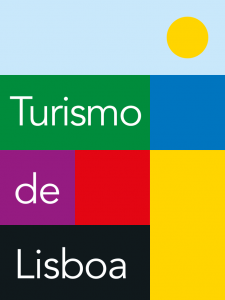Description
Live session notes are on Etherpad:
https://etherpad.net/p/LPC2019_IoT
The Internet of Things (IoT) has been growing at an incredible pace as of late.
Some IoT application frameworks expose a model-based view of endpoints, such as
on-off switches
dimmable switches
temperature controls
door and window sensors
metering
cameras
Other IoT application frameworks provide direct device access, by creating real and virtual device pairs that communicate over the network. In those cases, writing to the virtual /dev node on a client affects the real /dev node on the server. Examples are
GPIO (/dev/gpiochipN)
I2C (/dev/i2cN)
SPI (/dev/spiN)
UART (/dev/ttySN)
Interoperability (e.g. ZigBee to Thread) has been a large focus of many vendors due to the surge in popularity of voice-recognition in smart devices and the markets that they are driving. Corporate heavyweights are in full force in those economies. OpenHAB, on the other hand, has become relatively mature as a technology and vendor agnostic open-source front-end for interacting with multiple different IoT frameworks.
The Linux Foundation has made excellent progress bringing together the business community around the Zephyr RTOS, although there are also plenty of other open-source RTOS solutions available. The linux-wpan developers have brought 6LowPan to the community, which works over 802.15.4 and Bluetooth, and that has paved the way for Thread, LoRa, and others. However, some closed or quasi-closed standards must rely on bridging techniques mainly due to license incompatibility. For that reason, it is helpful for the kernel community to preemptively start working on application layer frameworks and bridges, both community-driven and business-driven.
For completely open-source implementations, experimental results have shown results with Greybus, with a significant amount of code already in staging. The immediate benefits to the community in that case are clear. There are a variety of key subjects below the application layer that come into play for Greybus and other frameworks that are actively under development, such as
Device Management
are devices abstracted through an API or is a virtual /dev node provided?
unique ID / management of possibly many virtual /dev nodes and connection info
Network Management
standards are nice (e.g. 802.15.4) and help to streamline in-tree support
non-standard tech best to keep out of tree?
userspace utilities beyond command-line (e.g. NetworkManager, NetLink extensions)
Network Authentication
re-use machinery for e.g. 802.11 / 802.15.4 ?
generic approach for other MAC layers ?
Encryption
in userspace via e.g. SSL, /dev/crypto
Firmware Updates
generally different protocol for each IoT framework / application layer
Linux solutions should re-use components e.g. SWUpdate
If you are interested in participating in this microconference and have topics to propose, please use the CfP process. More topics will be added based on CfP for this microconference.
This Microconference will be a meeting ground for industry and hobbyist contributors alike and promises to shed some light on the what is yet to come. There might even be a sneak peak at some new OSHW IoT developer kits.
The hope is that some of the more experienced maintainers in linux-wpan, LoRa and OpenHAB can provide feedback and suggestions for those who are actively developing open-source IoT frameworks, protocols, and hardware.
MC leads
Christopher Friedt chris@friedt.co, Jason Kridner jkridner@beagleboard.org, and Drew Fustini drew@beagleboard.org
Greybus is an RPC like protocol on top UniPro bus that has been designed for the Project ARA. This goal of that project was to develop a modular smartphone. Greybus gives the ability to the host to control remotely the buses (such as i2c or spi) of the modules.
Although Project ARA has been aborted, Greybus has been merged to Linux kernel, and it is still maintained by the community.
Greybus...
IoT applications, be they Autonomous Cars [1] or Health Care or Smart Home or Factory Automation, the IoT devices (sensors and actuators), gateways, and cloud/datacenter endpoints need software and/or firmware updates, to fix security issues, patch bugs, and/or release new features. IoT with its numerous remote devices and gateways presents a large attack surface, making the application of...
Many "drivers" for IoT sensors and actuators live outside kernel space through efforts that seek to provide abstractions not sufficiently handled in the kernel today. This is resulting in great code fragmentation that can be resolved by better understanding the developer needs and communicating an achievable collaborative approach. Pushing the interface to these devices off to userspace is...


